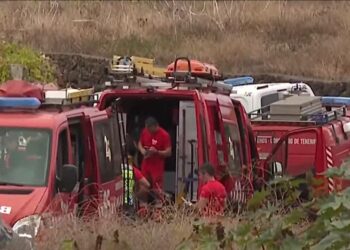Arona, Adeje, San Miguel, and Granadilla, the municipalities in Tenerife that have seen the greatest increase in population since the start of the century, are set to receive the majority of the funding from the Educational Infrastructure Shock Plan in Southern Tenerife 2024-2031. This initiative, led by the Canary Islands government, aims to deliver a “strategic and urgent response to the critical state of schooling in the region and one of the most pressured areas of the Archipelago,” as highlighted by the Ministry of Education.
The plan outlines a total investment of €77,705,351 to establish 10 new educational facilities and expand 17 others over the next eight years across a dozen municipalities. This effort seeks to address the notable population surge of recent decades, which has, in some areas, resulted in population numbers doubling or even tripling, primarily due to substantial internal and external migration.
The document underlines that the steady arrival of new families, drawn to the region by job opportunities in the tourism industry, along with the resultant enrolment of students in Early Childhood, Primary, and Secondary Education, has underscored the urgent need to enhance and broaden educational infrastructure.
Arona, the most populous municipality in the South with over 100,000 residents, will receive the largest share of funding (€24,693,226) dedicated to the establishment of a Special Education Centre and a school residence in Parque La Reina (€10,646,500), an Integrated Vocational Training Centre in Los Cristianos (€7,800,000), and expansions of IES Ichasagua (€2,800,000), IES Los Cristianos (€2,721,689), the Official Language School (€2,563,116), CEIP Buzanada (€682,280), and IES Arona Section (€42,757).
Adeje ranks second in terms of financial support to tailor its educational offerings to present and future demands, receiving €14,338,355. It will see the construction of more centres than any other municipality, specifically a CEIP in Tijoco Bajo (€7,000,000), an Integrated Vocational Training Centre (€6,638,355) that has already commenced operations this year, and a Special Education Centre (€700,000).
San Miguel de Abona ranks third in benefiting from the Canary Islands government’s shock plan, with an investment of €13,926,611 allocated for a new institute in Las Chafiras (€9,426,611) and an additional school in the same area, costing €4,500,000.
The neighbouring municipality of Granadilla de Abona will receive a nearly identical investment (€13,804,256), which includes the construction of a Compulsory Education Centre in San Isidro (€7,500,000) and an Integrated Vocational Training Centre (€1,900,000). Furthermore, improvements will be made to the facilities of IES El Médano (€1,835,558), CEIP Los Abrigos (€1,200,000), IES Magallanes (€651,750), CEIP Abona (€500,000), CEIP Los Cardones (€200,000), and CEIP Froilán Hernández (€16,948).
The plans for new infrastructure in southern Tenerife are rounded off by the construction of a Compulsory Education Centre in Abades (Arico), which is budgeted at €6,400,000. Santiago del Teide will also benefit from an investment of €1,074,696 to refurbish IES Serafín Pardo (€824,696) and CEIP José Esquivel (€250,000). Candelaria plans to expand CEIP Punta Larga (€432,513), while Arafo will improve the Andrés Compulsory Education Centre Orozco (€71,373), alongside Fasnia with CEO Guajara (€365,534). Vilaflor de Chasna will secure a sum of €35,671 for updates to CEO Hermano Pedro. The shock plan features a mechanism for the annual adjustment of its timeline and funding, as specified in the document. Consequently, “progress and emerging needs will be assessed” every year, with an updated plan published on the Ministry’s website to facilitate “continuous and transparent oversight.”
















